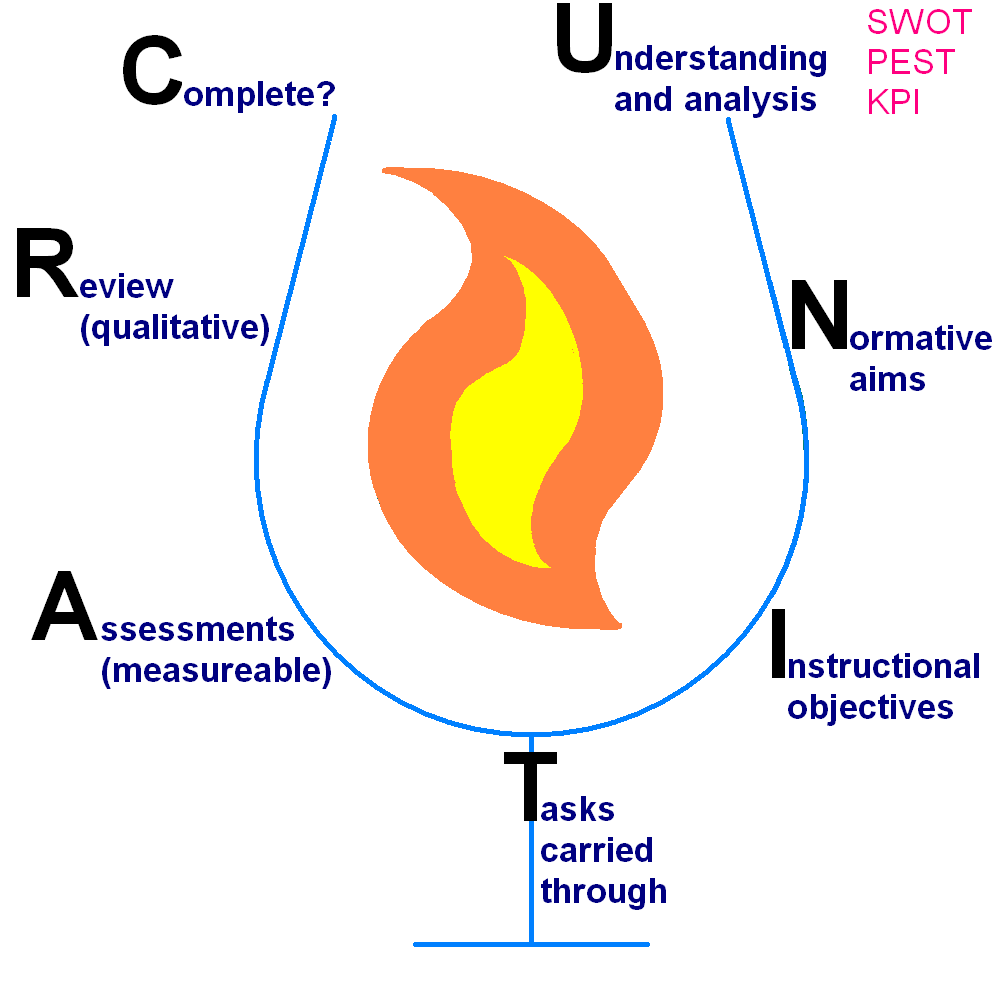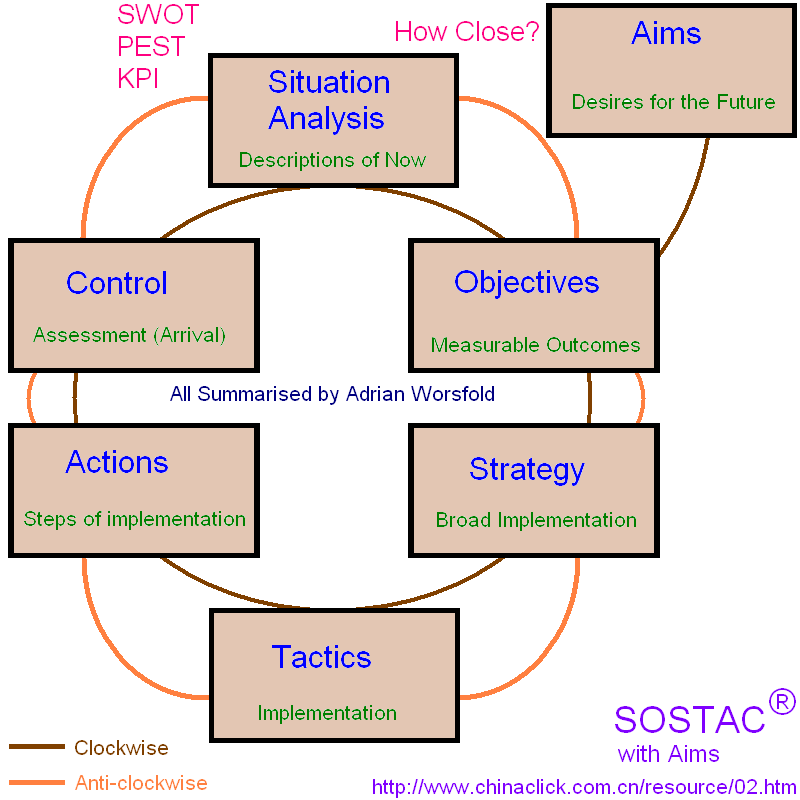
UNITARC is a variant of the well-known SOSTAC ® analysis, but it adds aims and simplifies the task making element.
UNITARC is designed for congregational development.
SOSTAC ® uses these stages:
Arguably its weaknesses include an absence of aims and too many implementation stages. Action is a form of implementation (on some undertandings) or it is in the wrong place.

UNITARC starts with Understanding and analysis, which is how matters appear now. It should be a thorough analytical description of the institution and employ SWOT, PEST and KPI methods. SWOT means Strengths and Weaknesses internally and Opportunities and Threats that come externally. PEST is reconfigured to mean the Political or organisational character as in trustees, committees and congregational meetings, the Economic is the financial condition including how money is raised, Social is the community aspect (who and what is done and for what purpose) and T means Technology available or in the church-case Telling the story being the life and means of the institution (Telling the story and Technology equate in that they are both the kinetic means of delivery). KPI means Key Performance Indicators such as membership, association, attendance, and other agreed indicators.
From the condition of the institution arises the Normative Aims of the UNITARC. Normative means what should be done. One shouldn't be planning for aims like reducing congrgational numbers. Normative aims are likely to include growth in numbers, in spiritual depth, and adding to the number of social activities both for members and outsiders benefit.
These should be broken down into specific Instructional objectives that are measureable, so specific that each can be carried out relatively separately or distinctively. If one cannot say whether an objective has been achieved, it isn't an objective; plus it is to be carried out and that makes it instructional.
So the Tasks are carried out.
The Assessment works directly from the tasks and what they each achieved. The results should be measured and therefore quantifiable.
However, much that happens is not countable and has to be described using more subjective criteria and conversation. This is the reviewing aspect. The Review should also include the effect on the persons involved (similar to evaluations).
The arc ends in the question of whether or not the implementing and outcome is Complete. If not then there is still more to do or waiting for the result. If complete but more seems necessary, then this requires (indeed already involves) additional Understanding and analysis and a possible adjustment of the Normative aims.
Although the movement is clockwise, from right to left, reviewing and maintenance of the activity can involve backtracking from left to right.
Contrast with (my Aims added) SOSTAC® below:

Adrian Worsfold
Pluralist - Liberal and Thoughtful